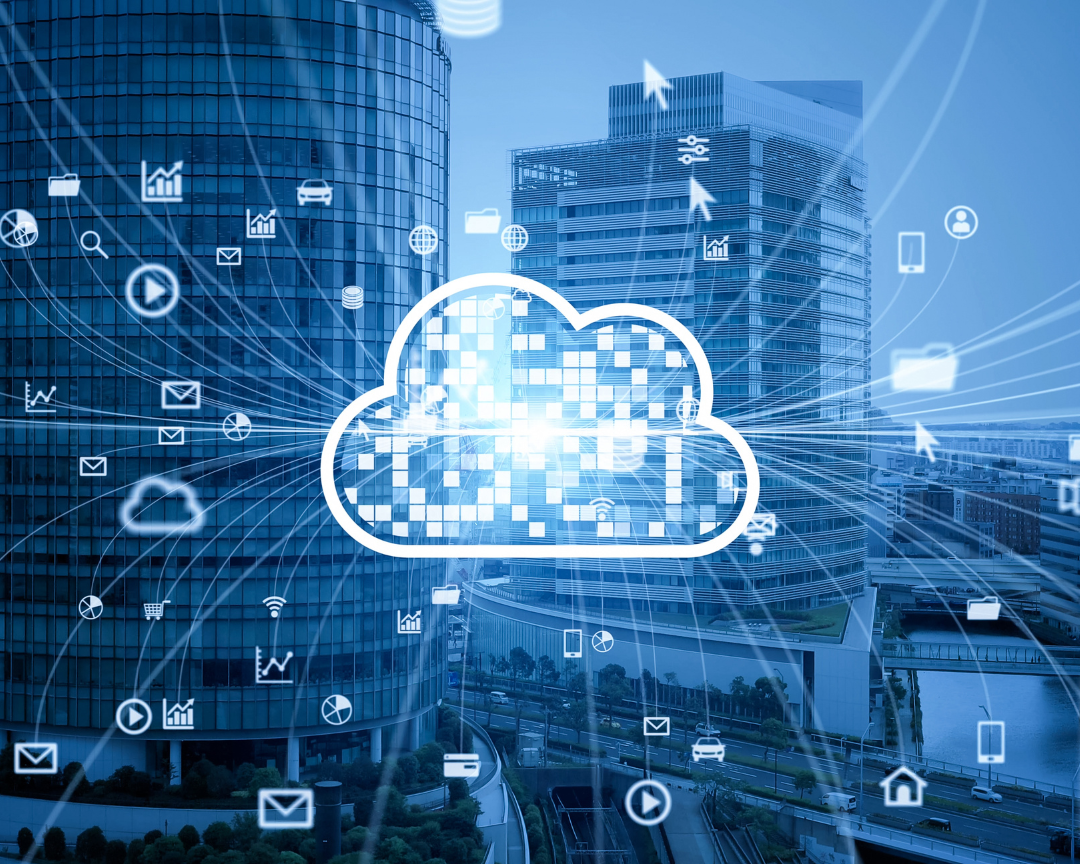
In the dynamic world of IT, Modern Endpoint Management (MEM) stands as a beacon of transformation, reshaping how organizations approach endpoint security and management. As we navigate away from traditional on-premises solutions, MEM introduces a new era dominated by cloud technologies, automation, and user-centricity. This article delves into how MEM is redefining IT strategies and what this means for businesses in the context of cybersecurity.
Key Takeaways:
- Rapid Adoption of Cloud-Based Solutions: Emphasizing the scalability and flexibility offered by cloud technologies in endpoint management.
- Heightened Focus on Cybersecurity: Understanding the crucial role of robust security measures in the era of digital threats.
- Adapting to the Mobility of the Modern Workforce: Acknowledging the challenges and solutions in managing endpoints in a hybrid work environment.
Embracing Worker Mobility in Endpoint Management
The rise of remote work and the use of personal devices for professional purposes have introduced new challenges in endpoint management. MEM solutions must now cater to a workforce that is no longer confined to the office, managing and securing a growing array of devices. This trend highlights the need for MEM solutions that are flexible and robust enough to handle the complexities of today's hybrid work environments.
Cloud-Based Solutions: Pioneering Flexibility and Scalability in Endpoint Management
MEM is revolutionizing endpoint management through its adoption of cloud-based technologies. In 2023, we witnessed a significant shift towards these solutions, offering unparalleled scalability and centralized control and we believe it will continue to rise in significance and demand. With the increasing adoption of cloud-based Unified Endpoint Management (UEM) tools, businesses are finding new ways to adapt quickly to the evolving needs of modern workplaces. This shift emphasizes the critical role of cloud solutions in modern endpoint management.
Benefits of Cloud-Based Solutions:
Cost Savings
Reduced Infrastructure and Operational Costs: Cloud computing reduces the need for large investments in hardware and software, along with minimizing the costs of running on-site data centres.
Pay-as-you-go Pricing Model: Cloud services often operate on a subscription basis, allowing businesses to pay only for the resources they use, which can significantly reduce overall IT expenses.
Ease of Deployment
Rapid Implementation and Scalability: Cloud solutions can be quickly deployed and easily scaled to match business needs, enabling faster response to market changes.
Accessibility and Collaboration: Cloud services offer the advantage of remote access, facilitating easier collaboration among teams, regardless of their location.
Real-Time Updates and Innovation
Automatic Software Updates: Cloud providers routinely update and upgrade their services, ensuring businesses have access to the latest features without manual intervention.
Access to Cutting-Edge Technologies: Cloud services give businesses the opportunity to leverage advanced technologies and innovations without significant investment in new hardware or software.
Real-World Applications of Modern Endpoint Management Solutions
In practice, Modern Endpoint Management is embodied through advanced solutions like Microsoft Intune/ Autopilot, Citrix Endpoint Management and VMware Workspace ONE. Each of these platforms exemplifies the principles of MEM in action:
Microsoft Intune, A part of Microsoft's Enterprise Mobility + Security (EMS) suite (including Autopilot), Intune is a cloud-based service focused on mobile device management (MDM) and mobile application management (MAM). It allows organizations to manage devices and applications used by their workforce while ensuring that their data remains secure. Intune is particularly popular for its seamless integration with other Microsoft services and its comprehensive set of features for managing both mobile and desktop endpoints.
Citrix Endpoint Management stands out with it ability to provide extensive mobile device management capabilities and supports a wide range of device types and mobile operating systems. It is known for its strong security features, including mobile application management and a secure mobile gateway. Citrix Endpoint Management integrates well with other Citrix products, making it a preferred choice for businesses already using Citrix solutions for virtualization or networking.
VMware Workspace ONE is an intelligence-driven digital workspace platform that combines MDM and MAM capabilities. Workspace ONE is known for its extensive support for different types of devices, including smartphones, tablets, laptops, and desktops. It provides a single platform for managing all endpoints and offers a robust set of features for automation, security, and user experience personalization.
Incorporating these solutions into an organization's MEM strategy not only enhances security and compliance but also elevates overall operational efficiency and user experience.
Prioritizing Cybersecurity in a Digital World
In today's digital landscape, cybersecurity is more critical than ever. As MEM evolves, it brings a heightened focus on security measures. Endpoint security and the integration of security software with unified consoles are becoming central to MEM strategies. Upskilling staff in cybersecurity awareness is becoming essential to fortify defenses against sophisticated cyber threats.
Emerging Threats and MEM Solutions
The landscape of cybersecurity is constantly evolving, with new threats emerging regularly. Some of the latest cybersecurity threats include sophisticated ransomware attacks, phishing campaigns, and advanced persistent threats (APTs). These threats are becoming more complex and harder to detect, often exploiting vulnerabilities in traditional security systems.
- Enhanced Detection and Response: MEM solutions now often include advanced endpoint detection and response (EDR) capabilities. EDR tools provide real-time monitoring and automated response to threats, allowing for quicker identification and isolation of attacks.
- Integration of Artificial Intelligence: Many modern MEM solutions are integrating AI and machine learning to predict and identify new threats based on patterns and anomalies.
Zero Trust Model in MEM
The Zero Trust security model operates on the principle of "never trust, always verify". This model is increasingly being adopted in MEM strategies to enhance security, especially in today's environment where the perimeter-based security model is no longer sufficient.
Implementation of the Zero Trust Model in MEM involves:
- Identity Verification: Zero Trust requires strict identity verification for every user and device trying to access resources in a network. This often involves multi-factor authentication (MFA) and rigorous identity management.
- Least Privilege Access: This principle ensures that users and devices are granted only the necessary access rights to perform their tasks, reducing the risk of lateral movement in case of a breach.
Automation: Enhancing Efficiency in Endpoint Management
At the core of MEM lies the power of automation. By automating routine tasks like software updates, patches, policies and security configurations, organizations can enhance efficiency and ensure continuous protection against emerging threats. This shift towards automation not only streamlines operations but also reduces the demand on IT resources.
Exploring Automation in MEM:
- Automated Processes and Workflows: Automation in endpoint management streamlines tasks such as software updates and compliance checks, ensuring they are performed consistently and efficiently.
- Impact on IT Teams: Automation allows IT teams to focus on strategic tasks by handling routine tasks, thereby increasing productivity and job satisfaction.

User-Centric Security: Balancing Convenience and Safety
In the era of Bring Your Own Device (BYOD) and remote work, MEM is redefining the balance between user experience and security. Organizations are now looking to create environments where users can work seamlessly without compromising data integrity and confidentiality. MEM considers the needs and preferences of end-users while maintaining robust security measures. Striking this balance is crucial for fostering productivity without compromising on data integrity and confidentiality.
Unified Endpoint Management (UEM): Streamlining Device Management
MEM often integrates Unified Endpoint Management, offering a unified platform to manage both traditional and mobile devices. This consolidation simplifies administration, providing a comprehensive view of an organization's diverse endpoint landscape and streamlining the management process.
Benefits of UEM:
- Improved Compliance: UEM tools can automate the enforcement of compliance policies across all managed devices, ensuring that they meet regulatory standards and organizational policies.
- Efficiency and Cost Savings: By consolidating multiple management tools into a single solution, UEM can reduce the time and resources needed to manage endpoints, leading to operational efficiencies and cost savings.
Conclusion: Navigating the Future of Endpoint Management
The journey towards modern endpoint management is marked by continuous evolution in response to emerging technologies and changing work environments. By staying ahead in MEM, organizations not only enhance their cybersecurity posture but also will help achieve a more agile and responsive IT infrastructure, ready to meet the challenges of the digital era.
In summary, MEM is a critical component in the modern IT landscape, driven by advancements in cloud technology, an unwavering focus on cybersecurity, and the need to adapt to a mobile workforce. By embracing these elements, organizations can secure their data, optimize their IT operations, and provide a seamless user experience in an increasingly digital world.
Altanora’s team of Endpoint Management Specialist can help you strengthen your security and streamline your IT operations.





